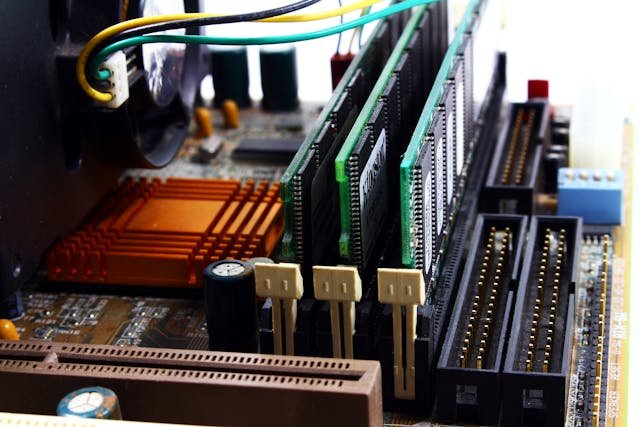Last Updated on March 17, 2024 by Umer Malik
The landscape of manufacturing and automation has undergone a significant transformation over the past few decades, largely driven by advances in computing technology. Central to this transformation have been automation PCs, panel PCs, and other operator terminals. These devices have evolved from simple interfaces and controllers to sophisticated systems that integrate seamlessly with industrial processes, offering unprecedented levels of control, efficiency, and adaptability. This article explores the evolution of these critical components in the manufacturing and automation sectors, highlighting their impact and the technological advancements that have shaped their development.
Table of Contents
The Dawn of Automation: Early Operator Terminals
The journey into automation began with the introduction of operator terminals in the late 20th century. These early devices were rudimentary, offering basic control functions and limited interaction capabilities. Typically comprising a simple display and keypad, they allowed operators to input commands and monitor the status of machines. Despite their simplicity, these terminals marked the beginning of computerized control in manufacturing, setting the stage for more sophisticated automation solutions.
The Rise of Automation PCs
As computing technology advanced, so did the capabilities of automation systems. The introduction of automation PCs represented a significant leap forward. These specialized computers, designed to withstand the harsh conditions of industrial environments, brought the power of desktop computing to the factory floor. With superior processing capabilities, they could handle complex calculations, manage extensive data, and control multiple processes simultaneously.
Automation PCs also introduced software programmability to manufacturing, enabling the customization of operations and providing the flexibility to adapt to different production requirements. Their connectivity options allowed for integration with various sensors and actuators, further enhancing their utility in automation.
The Advent of Panel PCs: Bridging the Gap
The evolution continued with the advent of panel PCs, which combined the functionality of automation PCs with the simplicity and user-friendliness of operator terminals. Panel PCs are all-in-one devices that feature a touchscreen interface, making them more intuitive and accessible for operators. Their compact, integrated design includes both the computer and display in a single unit that can be easily mounted on equipment or control panels.
Panel PCs like the VSP16.1BKE-512NN-C1C-AN-NN-FW, further improved on the durability and reliability of automation PCs, offering features like fanless cooling systems and solid-state drives to withstand vibrations, dust, and temperature fluctuations. Their touchscreens enabled more interactive control, allowing operators to visualize processes in real time, manipulate controls directly, and access detailed system information with ease.
Integration and Connectivity: The Key to Modern Automation
A defining aspect of the evolution of these systems has been the growing emphasis on integration and connectivity. Modern automation PCs, panel PCs, and operator terminals are equipped with a range of communication interfaces, such as Ethernet, Wi-Fi, and USB, facilitating seamless integration with other systems and devices. For instance the VPB40.3D1L-2G0NN-D2D-FN-NN-FW is a control cabinet pc that connects with a display to become a great interface for control and automation. This connectivity supports the implementation of the Internet of Things (IoT) in manufacturing, enabling devices to collect and exchange data, enhancing process efficiency, and enabling predictive maintenance and remote monitoring.
Moreover, the integration with advanced software platforms and support for programming languages has transformed these devices into powerful tools for data analysis, process optimization, and decision-making. They now serve not just as control interfaces but as hubs of intelligence that can analyze trends, optimize operations, and even predict system failures.
The Impact on Manufacturing and Automation
The evolution of automation PCs, panel PCs, and operator terminals has had a profound impact on the manufacturing and automation sectors. These technologies have enabled the realization of smart factories, where automation and data exchange drive production. They have made it possible to achieve higher levels of precision, efficiency, and flexibility in manufacturing processes, significantly reducing costs and improving product quality.
Furthermore, the enhanced capabilities of these systems have facilitated the adoption of complex manufacturing techniques, such as additive manufacturing and advanced robotics, opening up new possibilities for product design and production. They have also played a crucial role in improving workplace safety by enabling the automation of hazardous tasks and providing operators with better control and monitoring tools.
Challenges and Future Directions
Despite the significant advances, the integration of these technologies into manufacturing and automation comes with challenges. Issues such as cybersecurity, data privacy, and the need for skilled personnel to manage and maintain advanced systems are increasingly pertinent.
Looking ahead, the future of automation PCs, panel PCs, and operator terminals in manufacturing and automation is likely to be shaped by further advances in AI, machine learning, and edge computing. These technologies promise to enhance the autonomy, intelligence, and efficiency of automation systems, driving further innovations in manufacturing processes and capabilities.
Conclusion
The evolution of automation PCs, panel PCs, and operator terminals has been central to the transformation of the manufacturing and automation sectors. From simple control terminals to sophisticated, interconnected systems, these devices have continuously adapted to meet the changing demands of industry, playing a vital role in the rise of smart manufacturing. As technology continues to advance, their role is set to become even more critical, offering new opportunities for innovation, efficiency, and growth in the automation landscape.
Apart from this, if you are interested to know more about Smart Home Living then visit our Home Improvement category
















